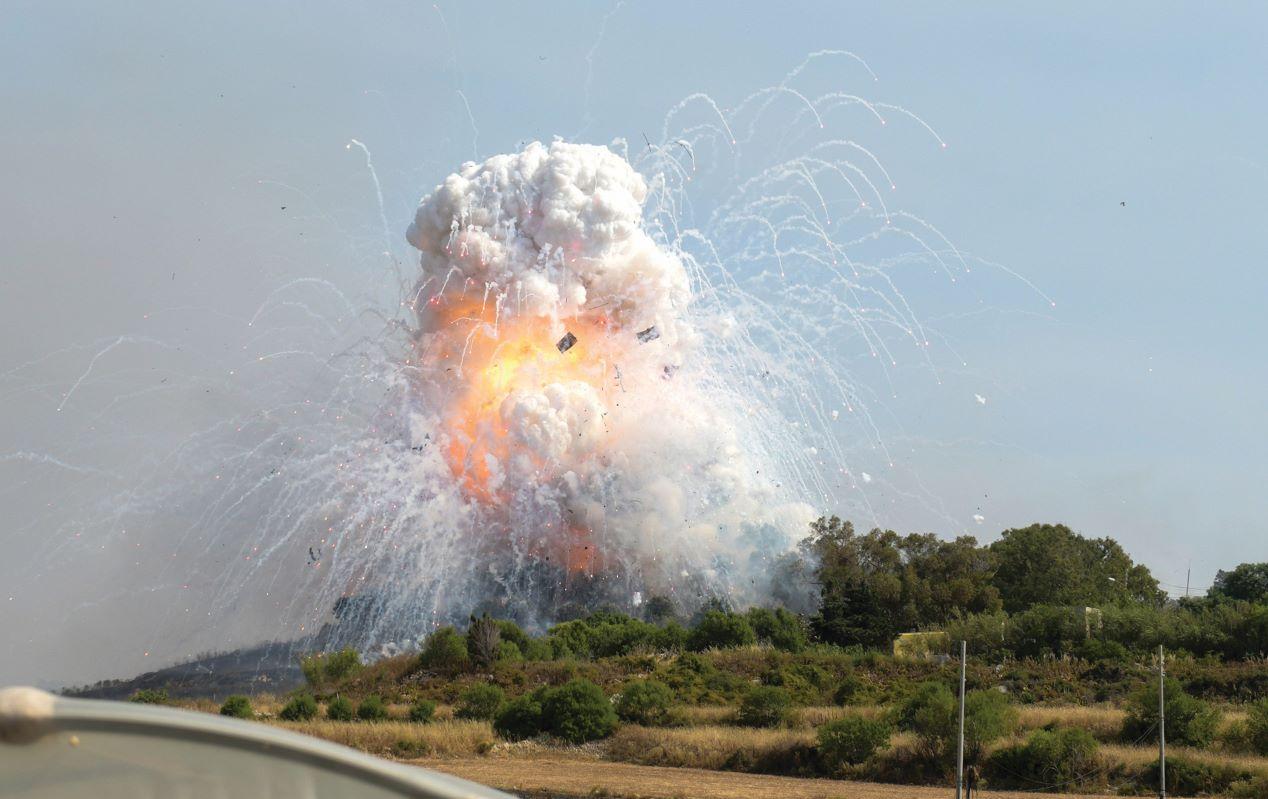The lethal combination of temperature, humidity and wind direction is what probably caused the explosions that blew apart some areas of a fireworks factory outside Mosta on Saturday afternoon, a pyrotechnics expert believes.
Servolo Delicata, one of three experts who inspect the island’s fireworks factories, said that weather conditions in the summer season were far from optimal for certain parts of the fireworks production process to take place. He recommended that these months be avoided.
Contacted by Times of Malta, Delicata said it appeared the first explosion occurred while the fireworks were drying outside as part of the production process.
He said that, from his experience, there were certain times of the year, such as in the summertime, when the production of fireworks ought not to take place. The weather conditions made it very dangerous and could be the cause of an accident rather than human error.
To be on the safe side, fireworks should be produced when temperatures are as low as possible, when humidity is above 50 per cent and when the wind is not blowing from the south, the pyrotechnics experts said.
 Four key sites of the fireworks factory explosion. Graphic: Christian Busuttil/Design Studio
Four key sites of the fireworks factory explosion. Graphic: Christian Busuttil/Design Studio“Once you have all three, you can say that you have the best weather conditions to manufacture fireworks and when you can work in a safe environment. On Saturday, all three were unfavourable, making it a lethal combination.”
Eleven people were on site at the time of the explosion, at 3.30pm on Saturday, but they somehow managed to avoid the worse of the inferno. It appears some warned their colleagues to run for cover, possibly averting tragedy.
Two men were initially hospitalised: a 29-year-old who suffered grievous injuries and a 25-year-old who sustained fractures. A third man, a 60-year-old, was hospitalised on Sunday. All are from Mosta.
Delicata yesterday explained that the likely cause of the spontaneous explosion was a chemical reaction involving water and metals.
Close up of the storage rooms. The storage rooms, surrounded by fortified walls to protect them against explosion appear to be completely undamaged. Debris from an explosion landed on the roof. [/attach]
As part of the process of fireworks manufacture, the pyrotechnic mixture is left outside to dry in a shaded area and this is the stage at which a chemical reaction is most likely to occur, especially if the mixture then comes into direct sunlight.
Once dry, the mixture is placed into shells which are what is let off into the air to create the display that lights up the night sky.
Delicata said there was a pattern of fireworks factory explosions taking place in the summer months when the fireworks simply ignite on their own.
A chemistry expert, he said chlorates and metals should never be mixed. Magnesium, which is commonly used in the production of fireworks, reacts with water. To prevent a reaction, the magnesium is first coated with a layer of oil before being mixed with water and placed outside to dry.
“The two react very slowly and no one will realise that there’s a reaction occurring. This is why we always recommend that not many fireworks are kept in the vicinity during drying stage because it is here that anything can happen,” he said.
 Close up of a structure located here was also completely gutted by either a fire or another explosion. It is unclear what the structure was used for.
Close up of a structure located here was also completely gutted by either a fire or another explosion. It is unclear what the structure was used for.He added that reactions may also be caused by a blast in the vicinity, at packing stage when friction could ignite a petard, during any type of hammering and when there’s static electricity usually caused by dryness in the air.
Delicata believes that the manufacture of black powder should take place in September and October followed by the production of flash powder (beraq) and pyrotechnic stars (stilel) when the temperature is at its lowest. They can then be placed into shells in February and March.
 The firework factory explosion. Photo: Matthew Mirabelli
The firework factory explosion. Photo: Matthew Mirabelli“In summer, only finishing touches should be applied because it is the most unsafe time of the year to work. The process is a long one and pyrotechnicians must be patient.
“As inspectors, we place a lot of emphasis on education. No pyrotechnician has any desire to get injured. They all want to return safely home after working at the factory. So they must take precautions.
“We often see certain slackness in those who have been doing it for some time. Overconfidence and haste could prove deadly. This is what we teach those who attend the course to be granted a licence,” he said.